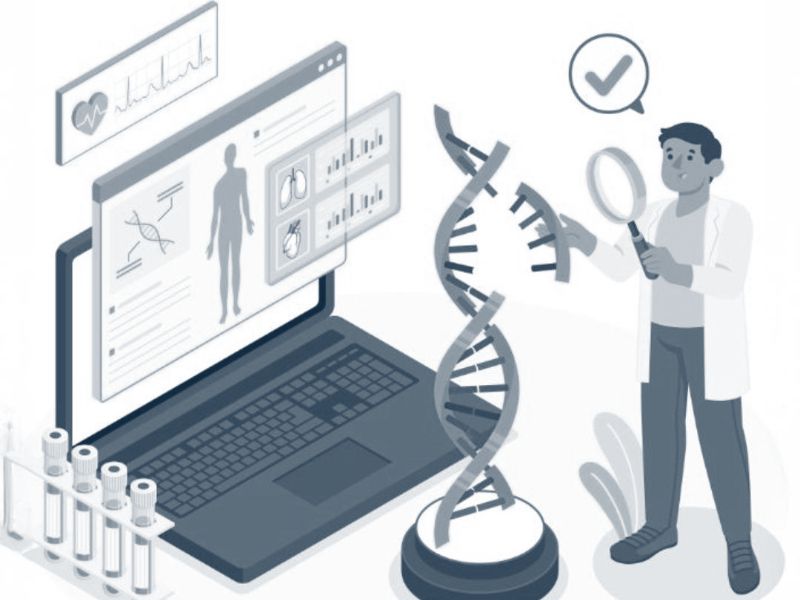
Understanding the Link Between Maternal BMI and Childhood Obesity Risk
Childhood obesity is a global public health concern, with rates reaching epidemic levels worldwide. Beyond immediate health challenges, childhood obesity increases the likelihood of persistent obesity into adulthood and raises the risk of early-onset metabolic and cardiovascular complications. Recent research highlights the significant role of the intrauterine environment—the conditions a fetus experiences in the womb—in shaping long-term health outcomes through metabolic programming1. This article explores the findings of a promising study, published in Obesity, conducted by Alice Maguolo, Charlotte Ling et al., that sheds light on the epigenetic2 mechanisms that link maternal BMI and childhood obesity risk. PhD student Alice Maguolo and Professor Charlotte Ling are both researchers from Lund University and partners of the Obelisk project.

PhD student Alice Maguolo and Prof Charlotte Ling.
What Is Epigenetics?
Epigenetics refers to changes in gene activity and expression that do not alter the DNA sequence. These changes are often influenced by environmental factors starting from the periconceptional period (the time around conception) and continuing throughout life. One of the most studied epigenetic mechanisms is DNA methylation (DNAm), which involves adding a chemical group to DNA, affecting how genes are turned on or off.
The Role of Maternal BMI in Childhood Obesity Risk
Researchers from the Obelisk project investigated how a mother’s body mass index (BMI) before pregnancy can influence a child’s future obesity risk through epigenetic changes observable at birth. The study used data from 232 mother-child pairs participating in the Treatment of Obese Pregnant Women (TOP) study, a randomised controlled trial in Denmark that examined the effects of physical activity and dietary interventions during pregnancy. DNA samples were taken from umbilical cord blood at birth, and a subset of children was followed until age three to assess their BMI and body fat composition.
Key Findings from the Study
- Association between maternal BMI and childhood obesity: Maternal pre-pregnancy BMI was linked to a child’s BMI z-score (a measure of relative weight adjusted for age and sex) and fat mass at three years of age. These are critical predictors of the risk of childhood obesity.
- Identification of epigenetic markers: The study found specific DNA methylation sites in cord blood associated with pre-pregnancy BMI. Two key sites, located in genes SYT7 and DEAF1A, partially explained the relationship between maternal BMI and the child’s BMI z-score at age three.
- Development of a methylation risk score: By combining the two identified epigenetic markers, researchers created a methylation risk score (MRS) that effectively identified newborns at higher risk of developing obesity. Newborns in the highest quartile of BMI z-score and fat mass at three years of age were accurately identified using this score.
Implications for Prevention and Healthcare
This study underscores the critical importance of maternal health, particularly maintaining a healthy BMI before and during pregnancy. The findings suggest that cord blood DNA methylation could serve as an early biomarker3 for identifying children at increased risk of obesity, enabling healthcare professionals to implement precision medicine approaches. Since collecting cord blood is minimally invasive, this method could offer a practical and accessible way to identify high-risk newborns.
Early identification of at-risk children at birth opens the door to tailored interventions aimed at preventing obesity. Personalised strategies could include dietary guidance, physical activity programs, and regular monitoring to mitigate obesity risks. These efforts could be pivotal in addressing the obesity epidemic and improving long-term public health outcomes.
Looking Ahead: The Need for Further Research
While the findings are promising, further studies are necessary to validate these results in larger and more diverse populations. More research is needed to uncover the detailed biological mechanisms linking maternal BMI, epigenetic changes, and childhood obesity.
Conclusion
The Obelisk project’s research highlights the link between maternal health and a child’s future well-being. By understanding and addressing the epigenetic factors that contribute to childhood obesity, we can pave the way for innovative prevention strategies. Empowering mothers with the knowledge and support to optimise their health before and during pregnancy could be a transformative step in tackling the global obesity epidemic.
If you want to read the entire study, visit "DNA Methylation in Cord Blood Partially Mediates the Effects of Prepregnancy BMI on Early Childhood Offspring BMI " - Maguolo - 2025 - Obesity, 33(1):177-189 (2025).
Glossary
1 Metabolic programming: A process by which environmental factors, particularly during early development, influence the metabolism and long-term health outcomes of an individual.
2 Epigenetics: Epigenetics refers to the study of changes in gene expression or activity that do not involve alterations to the underlying DNA sequence. Instead, these changes are often caused by chemical modifications to the DNA or the proteins around which DNA is wrapped (called histones). These modifications can influence how genes are turned on or off, affecting cellular functions and traits.
3 Biomarker: Measurable indicators or substances found in biological samples such as blood and urine. They provide information about a biological process, condition, or disease.
Paper
Alice Magoulo, Charlotte Ling et al. DNA Methylation in Cord Blood Partially Mediates the Effects of Prepregnancy BMI on Early Childhood Offspring BMI. Obesity, 33(1):177-189 (2025).